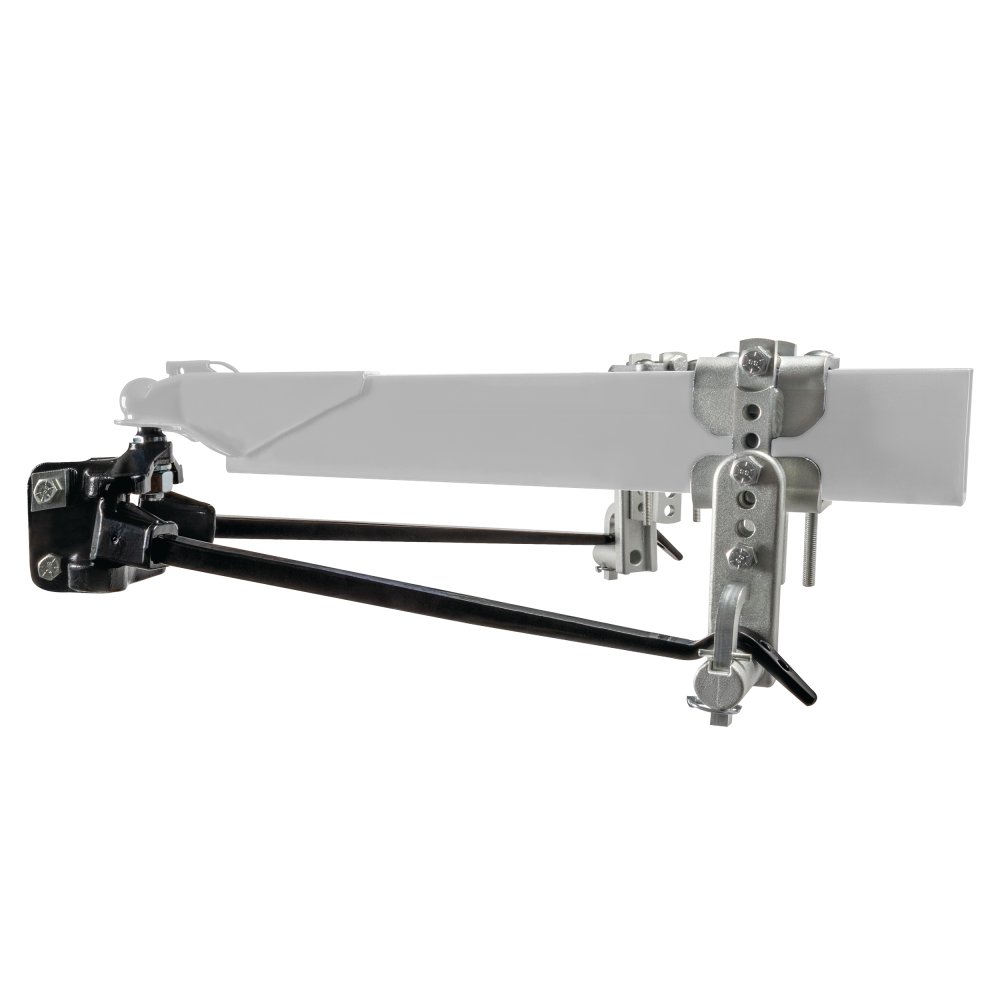Finding balance, harmony, and proper weight distribution.
nothing can quite mess with your chi like an unruly trailer. In a perfect world, you just hitch up and slide onto the highway where truck and trailer become one. But if you don’t have a proper connection with your trailer, you can kiss all that highway zen goodbye. Instead you could be wrestling with vehicle control, hard steering, and poor braking—all of which are more than bothersome. They’re dangerous. Fortunately, if you give weight distribution the proper attention, these problems are easy to avoid. And whether you’re a newbie or a veteran camper, understanding a few basic principles can help you master the tao of towing.
The Importance of Connection
If you’re already asking, “What is the weight distribution?” let’s be clear: There’s no shame. Let’s just illustrate it for a second. When you connect your trailer to a tow vehicle, the trailer tongue weight presses down on the connection point. Without proper weight distribution, the rear of your vehicle will then be forced downward from the trailer tongue’s weight. And as the rear of the vehicle goes down, the front of the vehicle will be lifted up. The result? Reduced weight on the front axle (that’s bad), which can lead to a reduced vehicle and trailer control, insufficient braking power, steering loss, and overall increased stress and wear on critical vehicle components. (Not to mention increased driver stress as you maneuver on the road with reduced control.)
On the other hand, a correctly installed weight distribution hitch creates a balance between the trailer and the tow vehicle. It forces them to act as a single unit. They become one with each other. They drive as one, handle as one, and brake as one. In sum, it improves connection and keeps braking, steering, and handling characteristics at safer levels.

Taking Measure of Balance
Now, whether you installed your hitch yourself or a dealership professionally installed it for you, it’s equally important to make sure your setup has the proper weight distribution percentage for a safe and comfortable tow. Even minor changes in trailer cargo, like full or empty water tanks, can affect your weight distribution and reduce tow vehicle stability. Your process starts with some measurements. First, check and adjust your weight distribution. To do that, you can use a device like the OnTarget™ Towing Tool by Equal-i-zer. This tool calculates your weight distribution percentage for you. Alternatively, you can even manually calculate weight distribution by gathering a tape measure, pencil, and calculator. Just use the table below.
Next, set up or determine your weight distribution percentage. You’ll need to take three sets of measurements on your tow vehicle. Put these measurements into the OnTarget device or record them in the table below. Measure first without the trailer coupled. Then measure with the trailer coupled—but with no weight distribution. Finally, measure with the trailer coupled and the weight distribution engaged. With the OnTarget device, a weight distribution percentage will be calculated for you.
To manually calculate the weight distribution percentage, find the difference between B and C, then divide it by the difference between B and A, then multiply the result by 100. A good weight distribution adjustment falls between 50 and 100 percent. You can expect every tow vehicle and trailer combination will be different. (Refer to your tow vehicle owner’s manual for exact ratings. You don’t want to exceed 100 percent.) If you are not within that range, adjust your hitch to increase or decrease weight distribution, then test drive your setup. If during the test drive, you feel you need more or less weight distribution, adjust your hitch and measure again. Then comes the fun part: the exquisite harmony of the vehicle and trailer. With proper weight distribution, your drive will be safer. More comfortable. And— take a big breath—more peaceful.
Some Sublime Hitches




